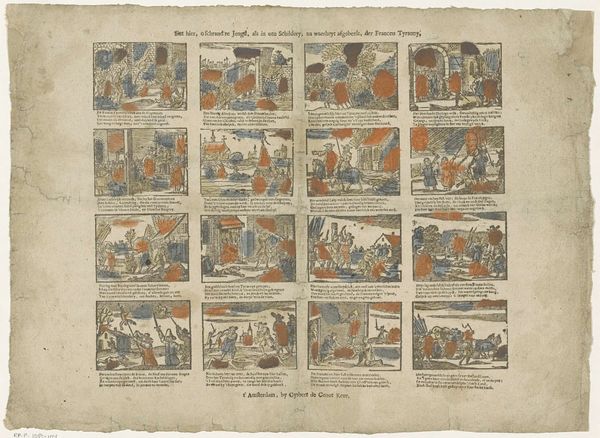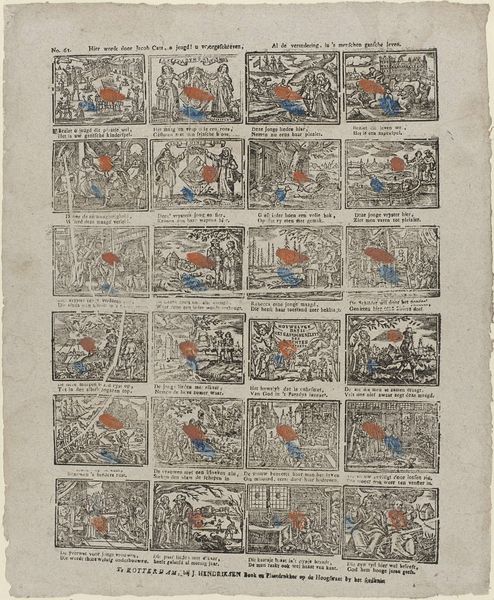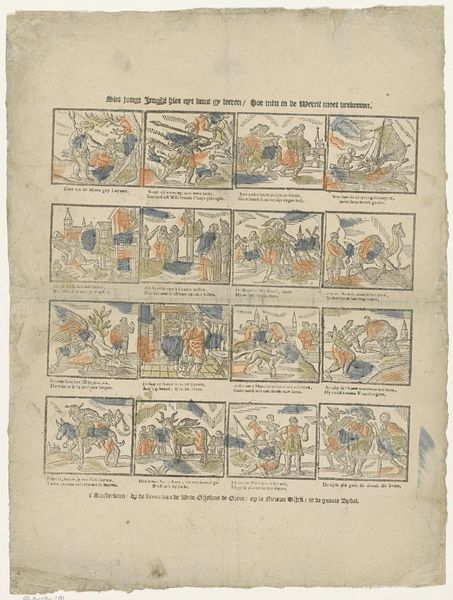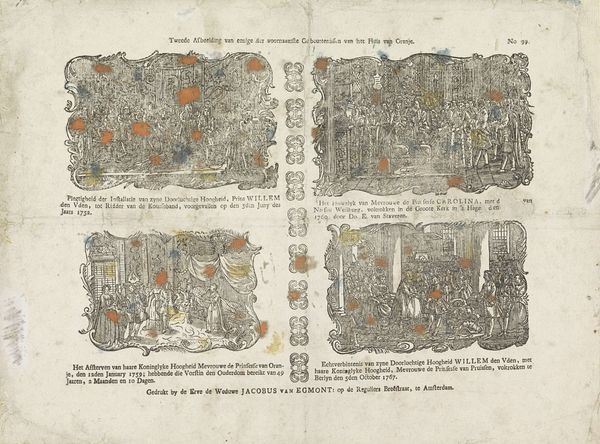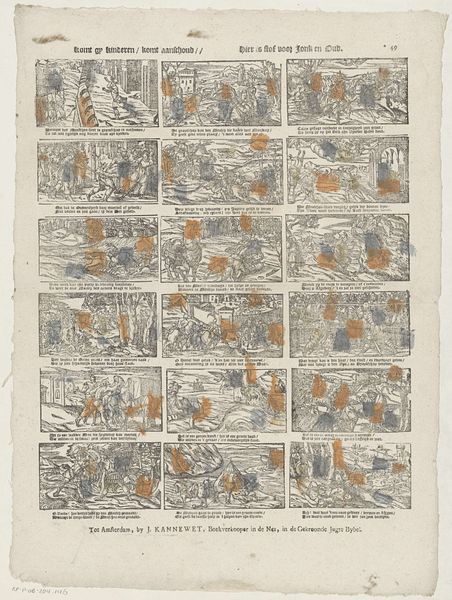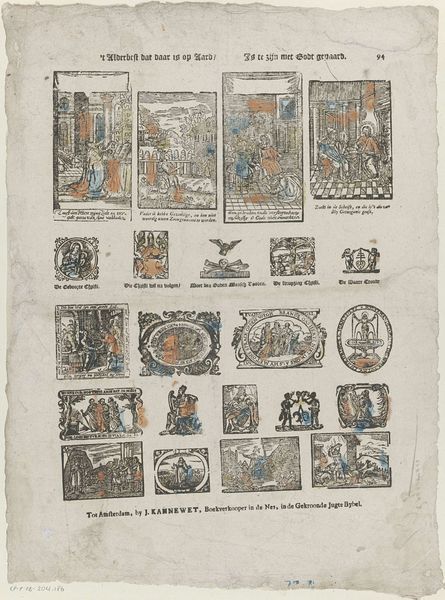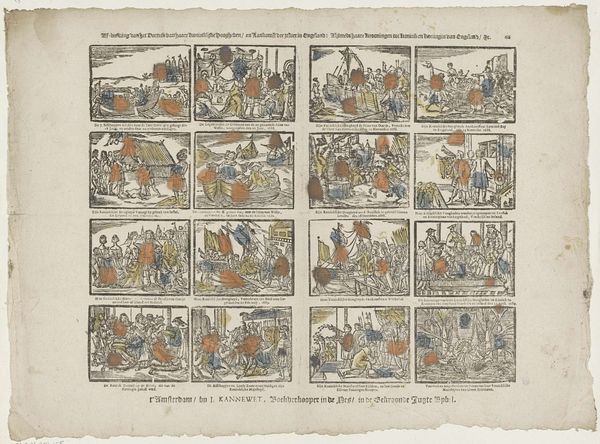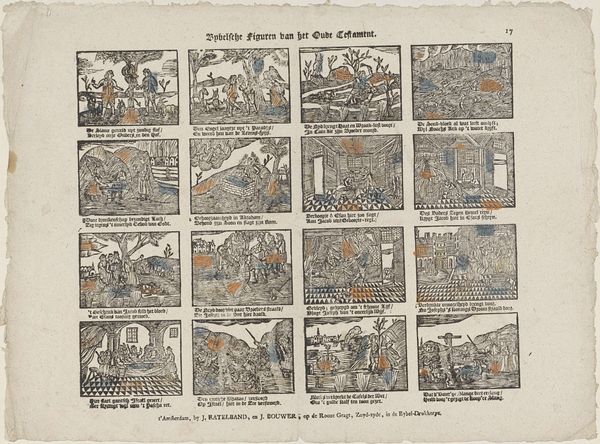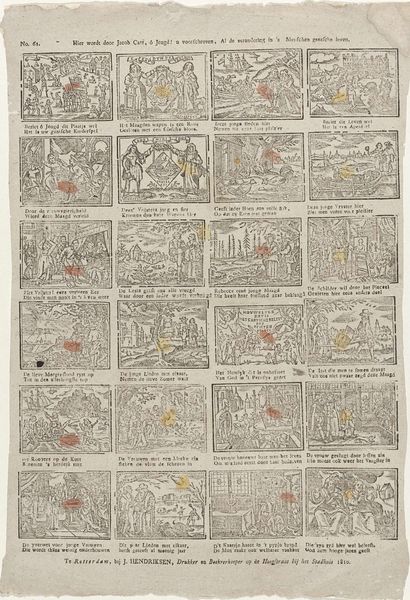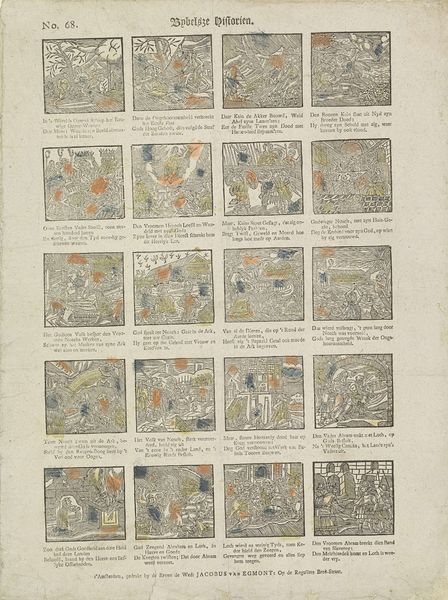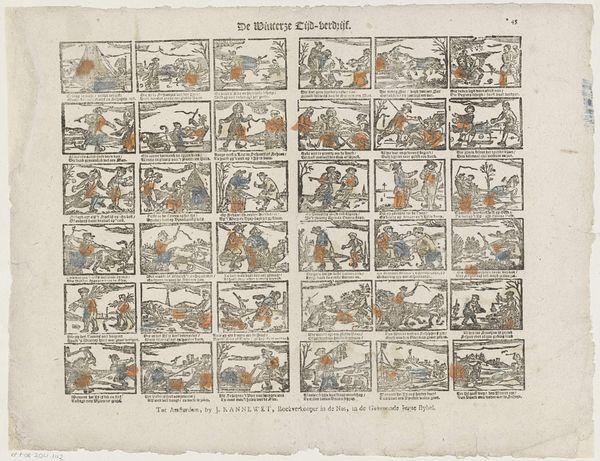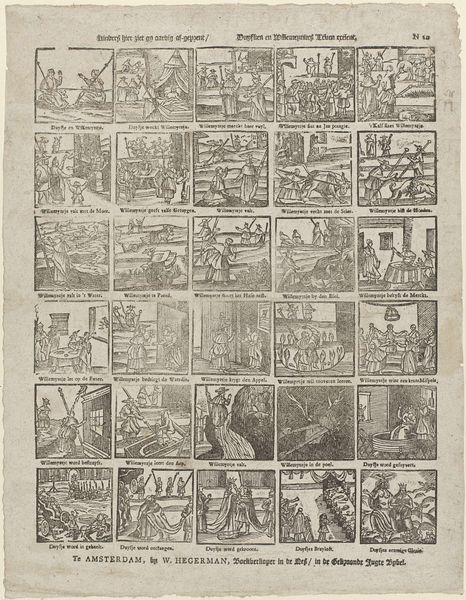
print, paper, engraving
#
aged paper
#
toned paper
#
narrative-art
#
dutch-golden-age
# print
#
sketch book
#
paper
#
personal sketchbook
#
pen-ink sketch
#
ink colored
#
pen work
#
sketchbook drawing
#
history-painting
#
storyboard and sketchbook work
#
sketchbook art
#
engraving
Dimensions: height 314 mm, width 426 mm
Copyright: Rijks Museum: Open Domain
Curator: At first glance, this print gives the impression of aged fragility, doesn’t it? The toned paper and delicate lines lend a sense of history to "Biblical Figures of the Old Testament," created by Gijsbert de Groot Keur sometime between 1738 and 1767. Editor: Yes, it certainly evokes that. The arrangement of small scenes reminds me of illuminated manuscripts or even early comic strips – a way to visually narrate stories for a wider audience, and that always brings forward questions about literacy, accessibility and the encoding of power at the time. Who was the audience meant to consume and decode it? Curator: Exactly. Each scene, rendered with pen and ink, offers a glimpse into well-known biblical tales. We can think about the emotional resonance these images had, drawing on shared cultural memory of those stories in the Dutch Golden Age. Note, for instance, the deliberate choices of which moments to depict, and in what visual language to translate these moments for maximum impact. Editor: And that visual language is far from neutral. I’m curious how the artist's choices might reinforce or even subtly challenge prevailing social norms or political climates of the time through these biblical narratives. Are we seeing power structures reinforced or resisted in those images? The small size hints it was perhaps meant for individual contemplation and personal consumption and invites closer readings and a more private engagement with religious ideas. Curator: Indeed, these scenes acted as visual metaphors. Symbols held real emotional and intellectual weight then – a weight often lost on contemporary viewers unfamiliar with that symbolic language. Looking closely reveals connections between these stories, a web of meaning built through recurring motifs and figures. The print becomes more than just illustrations. Editor: Agreed. These works often operated on multiple levels, simultaneously reinforcing dominant ideologies while also providing a space for subtle dissent. It gives a certain agency to the person gazing into those biblical representations and reassessing his relationship with the society he lives in. The role of the church is another aspect to consider, isn't it? Curator: Definitely. There’s a visual continuity here that speaks to how symbols operate within collective memory. These images help us to look back to ideas which built and codified early modern Western consciousness. Editor: For me, analyzing the historical context illuminates the work’s enduring relevance. By understanding its creation and reception, we are encouraged to reconsider how cultural narratives affect modern realities. It reveals how deeply ingrained these stories are, still shaping today’s ideologies.
Comments
No comments
Be the first to comment and join the conversation on the ultimate creative platform.
